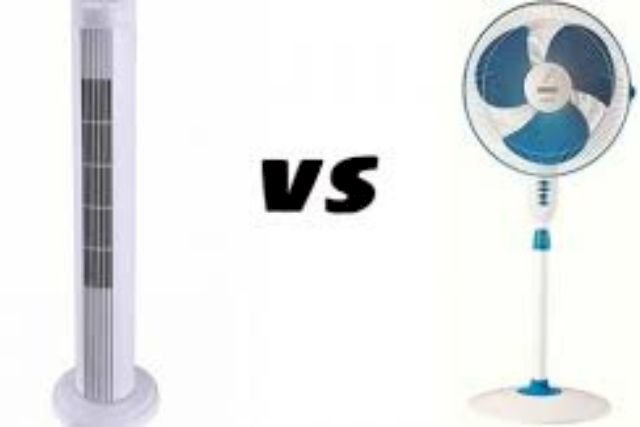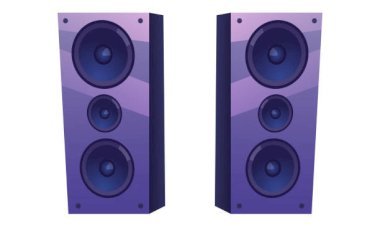Tower Fan vs Pedestal Fan: Which One Should You Buy in 2025?
Tower fan vs pedestal fan in 2025: Compare design, airflow, noise, price & efficiency. Discover which fan suits your home, office, or outdoor cooling needs.

In 2025, energy-efficient cooling solutions are more popular than ever. While air conditioners dominate in extreme climates, millions of households still rely on affordable fans for everyday comfort. When it comes to fans, two of the most popular options are tower fans and pedestal fans. Both offer effective cooling, but they differ in design, performance, and price.
If you’re wondering which is the better choice for your home or office, this detailed guide will help you compare tower fan vs pedestal fan across key features—so you can make the smartest decision in 2025.
What is a Tower Fan?

A tower fan is a slim, vertical fan that sits close to the floor and blows air across a wide area. Unlike traditional fans with large spinning blades, tower fans use a cylindrical design with oscillation technology to distribute airflow evenly.
Key Features:
-
Sleek, modern design that blends into interiors.
-
Oscillation for wide-area cooling.
-
Advanced models may include ionizers, HEPA filters, and remote control.
-
Compact footprint—ideal for small rooms.
Best for: Bedrooms, offices, and apartments where quiet operation and stylish design matter.
What is a Pedestal Fan?

A pedestal fan (also called a stand fan) consists of a large, circular blade head mounted on an adjustable stand. It delivers powerful airflow and can be tilted or adjusted in height for maximum coverage.
Key Features:
-
Adjustable height for flexible cooling.
-
Larger blades produce stronger airflow.
-
Wide oscillation angle for better circulation.
-
Affordable compared to tower fans.
Best for: Living rooms, outdoor patios, and large spaces that require strong, direct cooling.
Key Differences at a Glance
| Feature | Tower Fan | Pedestal Fan |
|---|---|---|
| Design & Size | Slim, space-saving | Bulkier, requires more room |
| Airflow Strength | Moderate, steady | Strong, wide coverage |
| Noise Level | Quieter | Louder at high speeds |
| Portability | Lightweight, compact | Bulky but height adjustable |
| Price (2025 Avg.) | $60–$150 | $30–$100 |
| Best For | Bedrooms, offices | Large rooms, outdoor cooling |
Advantages of Tower Fans
-
Space-Saving Design – Fits neatly into corners or beside furniture.
-
Quieter Operation – Perfect for sleeping or working environments.
-
Extra Features – Many models include remote controls, timers, and even air purifiers.
-
Child & Pet Friendly – Enclosed blades make them safer.
-
Stylish Look – Matches modern interiors better than bulky pedestal fans.
Advantages of Pedestal Fans
-
Powerful Airflow – Larger blades move more air, cooling bigger areas quickly.
-
Adjustable Height & Angle – Direct airflow exactly where you need it.
-
Budget-Friendly – Costs less than tower fans.
-
Durable & Reliable – Long-lasting mechanical design with simple maintenance.
-
Versatile Usage – Suitable for both indoor and semi-outdoor spaces.
Energy Efficiency & Power Consumption
In 2025, energy efficiency is a big concern for households.
-
Tower Fans usually consume 40–70 watts, depending on the model. Some high-end versions with purifiers may consume more.
-
Pedestal Fans generally use 50–75 watts, making them slightly less efficient but still far cheaper to run than air conditioners.
???? Both are cost-effective, but tower fans tend to save a bit more energy over time.
Noise Levels & Comfort
-
Tower Fans: Known for quiet operation, making them ideal for bedrooms or study rooms. High-end models run at <50 dB (similar to a whisper).
-
Pedestal Fans: Louder due to larger blades, with noise levels often reaching 60–70 dB. While not ideal for sleeping, they provide powerful airflow during hot afternoons.
Design, Portability & Space-Saving
-
Tower Fan: Sleek, modern, and compact—easy to move around. Fits in tight spaces and doesn’t interfere with furniture layout.
-
Pedestal Fan: Bulkier but highly adjustable in height and angle. Requires more space, making it less suitable for small apartments.
Price Comparison in 2025
-
Tower Fans: Range from $60–$150, depending on brand and extra features. Premium models with air purification can exceed $200.
-
Pedestal Fans: More affordable, typically $30–$100. High-end pedestal fans with remote control and advanced oscillation may cost slightly more.
???? Budget Tip: If cost is your priority, pedestal fans are the winner. If design and features matter more, tower fans justify their higher price.
Best Use Cases
-
Tower Fan:
-
Bedrooms (quiet operation)
-
Small apartments or offices
-
Homes with children or pets
-
Stylish interiors where looks matter
-
-
Pedestal Fan:
-
Large living rooms
-
Outdoor spaces like patios or balconies
-
Shared family areas needing strong airflow
-
Budget-conscious households
-
Tower Fan vs Pedestal Fan: Which is Right for You?
-
Choose a tower fan if you value quietness, modern design, safety, and compact size. It’s best for smaller rooms and daily personal use.
-
Choose a pedestal fan if you need powerful cooling for large spaces at a lower price. It’s the practical choice for living rooms and gatherings.
Ultimately, both fans serve different needs. Think about your budget, space, noise sensitivity, and cooling requirements before buying.
Conclusion
In 2025, the debate of tower fan vs pedestal fan comes down to lifestyle and space. Tower fans excel in design, silence, and safety, while pedestal fans shine in power, flexibility, and affordability. If you need quiet cooling in your bedroom, go for a tower fan. If you want strong airflow in your living room or outdoor area, a pedestal fan is the smarter pick.
Both are excellent low-cost cooling solutions compared to expensive air conditioning—ensuring you stay comfortable without breaking your budget.
FAQs
1. Which lasts longer: tower fan or pedestal fan?
Both can last 5–10 years with proper maintenance, but pedestal fans are mechanically simpler and may last longer.
2. Are tower fans worth the higher price in 2025?
Yes, if you want quietness, modern features, and stylish design.
3. Do pedestal fans consume more electricity?
Slightly, but the difference is minimal (5–10 watts). Both are very energy-efficient.
4. Which is better for small apartments?
Tower fans, since they are slim, quiet, and save space.
5. Can tower fans replace air conditioners?
No, but they can supplement ACs or provide affordable cooling where AC is not practical.
Read Also: Revel F226Be vs Magico S1 – In-Depth Review & Buying Guide

 alissaperry
alissaperry 






















